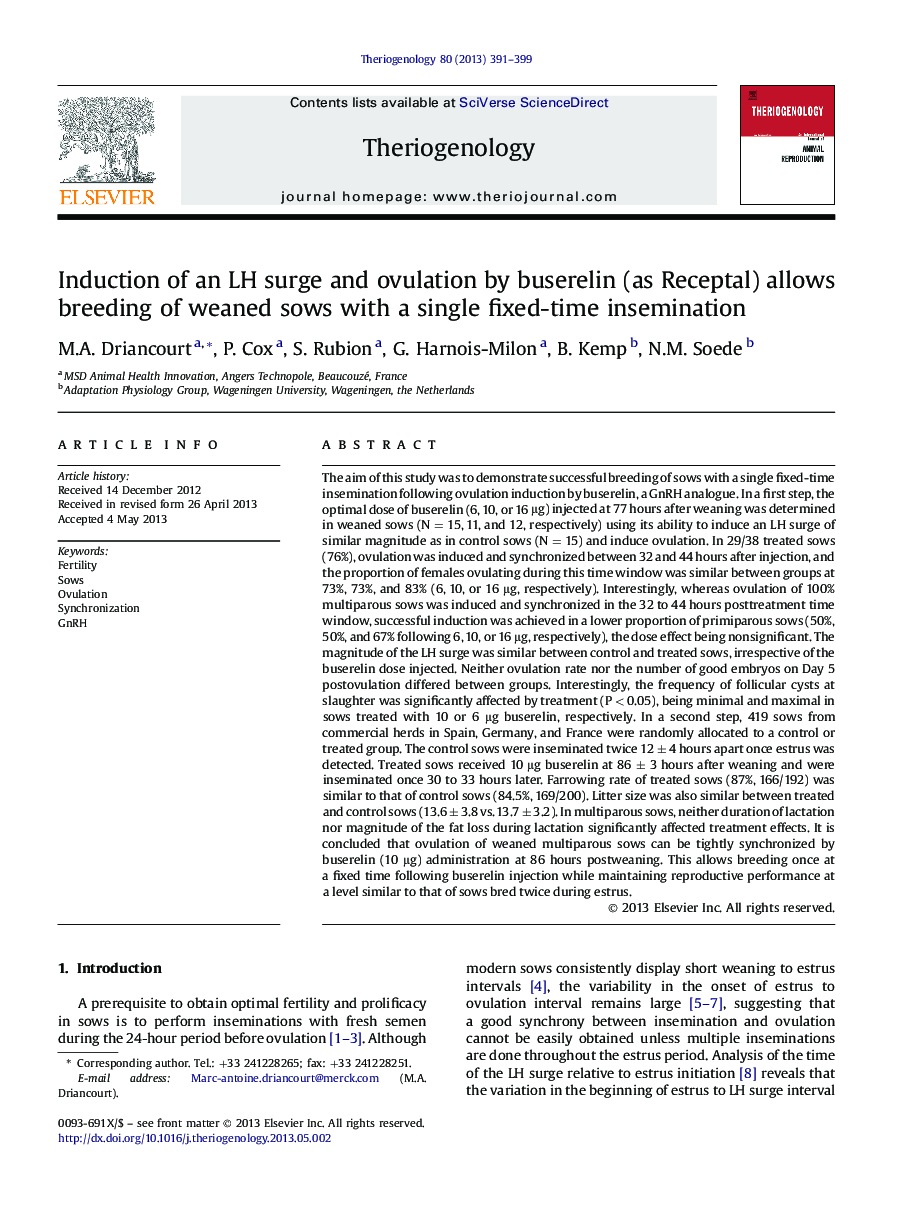| Article ID | Journal | Published Year | Pages | File Type |
|---|---|---|---|---|
| 10894446 | Theriogenology | 2013 | 9 Pages |
Abstract
The aim of this study was to demonstrate successful breeding of sows with a single fixed-time insemination following ovulation induction by buserelin, a GnRH analogue. In a first step, the optimal dose of buserelin (6, 10, or 16 μg) injected at 77 hours after weaning was determined in weaned sows (N = 15, 11, and 12, respectively) using its ability to induce an LH surge of similar magnitude as in control sows (N = 15) and induce ovulation. In 29/38 treated sows (76%), ovulation was induced and synchronized between 32 and 44 hours after injection, and the proportion of females ovulating during this time window was similar between groups at 73%, 73%, and 83% (6, 10, or 16 μg, respectively). Interestingly, whereas ovulation of 100% multiparous sows was induced and synchronized in the 32 to 44 hours posttreatment time window, successful induction was achieved in a lower proportion of primiparous sows (50%, 50%, and 67% following 6, 10, or 16 μg, respectively), the dose effect being nonsignificant. The magnitude of the LH surge was similar between control and treated sows, irrespective of the buserelin dose injected. Neither ovulation rate nor the number of good embryos on Day 5 postovulation differed between groups. Interestingly, the frequency of follicular cysts at slaughter was significantly affected by treatment (P < 0.05), being minimal and maximal in sows treated with 10 or 6 μg buserelin, respectively. In a second step, 419 sows from commercial herds in Spain, Germany, and France were randomly allocated to a control or treated group. The control sows were inseminated twice 12 ± 4 hours apart once estrus was detected. Treated sows received 10 μg buserelin at 86 ± 3 hours after weaning and were inseminated once 30 to 33 hours later. Farrowing rate of treated sows (87%, 166/192) was similar to that of control sows (84.5%, 169/200). Litter size was also similar between treated and control sows (13.6 ± 3.8 vs. 13.7 ± 3.2). In multiparous sows, neither duration of lactation nor magnitude of the fat loss during lactation significantly affected treatment effects. It is concluded that ovulation of weaned multiparous sows can be tightly synchronized by buserelin (10 μg) administration at 86 hours postweaning. This allows breeding once at a fixed time following buserelin injection while maintaining reproductive performance at a level similar to that of sows bred twice during estrus.
Related Topics
Life Sciences
Agricultural and Biological Sciences
Animal Science and Zoology
Authors
M.A. Driancourt, P. Cox, S. Rubion, G. Harnois-Milon, B. Kemp, N.M. Soede,
